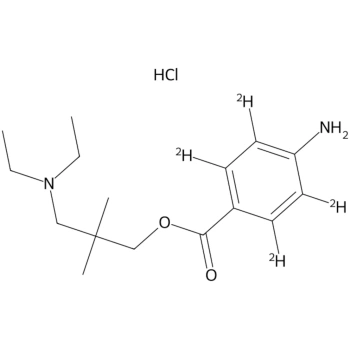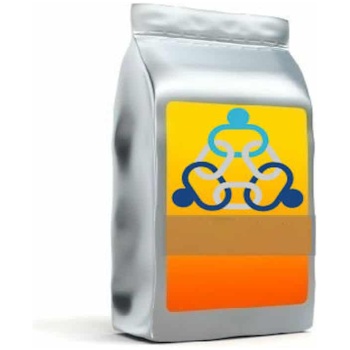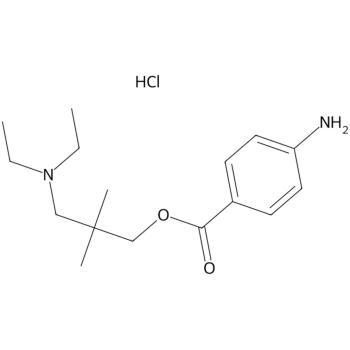Introduction to Dimethocaine Hydrochloride
Dimethocaine hydrochloride, a synthetic compound prized for its numbing properties, has garnered considerable interest in medical, pharmacological, and forensic research for its wide range of potential applications.
Definition and Background
Known by various names such as larocaine or DMC, this synthetic ester, exhibiting an anesthetic potency approximately ten times greater than cocaine, was initially synthesized in the 1930s. Researchers have extensively studied its pharmacological characteristics, especially its strong attraction to the dopamine transporter.
Physical and Chemical Properties
With a molecular formula C16H26N2O2, dimethocaine hydrochloride appears as a white crystalline powder with a melting point between 156-158°C. It dissolves easily in alcohol, chloroform, and ether, but doesn’t mix well with water. Its moderate ability to dissolve in fats, indicated by a logP value of 2.8, suggests its versatility for different uses.
Synthesis, Characterization, and Analytical Methods
The synthesis of dimethocaine hydrochloride involves a reaction sequence yielding the final product. Characterization techniques, including NMR, FTIR, and MS, offer insight into its structural properties and molecular characteristics. Analytical methods such as HPLC are employed for purity and concentration determination.
Biological Properties and Toxicity
This compound exhibits dual characteristics of a local anesthetic and a stimulant, possessing an affinity akin to cocaine for the dopamine transporter. Metabolized by the liver, it presents detectable metabolites in urine and plasma. While studies suggest it’s less toxic than cocaine, handling it cautiously is crucial due to possible adverse effects such as affecting heart function, breathing, and posing a risk of seizures.
Applications in Scientific Experiments and Current State of Research
In today’s scientific studies, Dimethocaine hydrochloride is being employed to explore pain management, investigate drug metabolism, and contribute to forensic science. This versatile compound allows researchers to delve into anesthetic mechanisms and scenarios involving drug abuse. Current research is focused on understanding its pharmacological effects, mechanisms of action, safety profiles, and its behavior concerning toxicity in scientific experiments.
Implications in Research and Industry, Limitations, and Future Directions
The compound’s potential implications span various research and industry domains, presenting a promising alternative to traditional anesthetics and offering avenues for drug metabolism exploration in the liver. However, addressing long-term safety concerns, understanding mechanisms of action, and delving into structure-activity relationships remain imperative for future research and applications.
Conclusion and Future Directions
Dimethocaine hydrochloride, with its considerable potential and favorable properties, holds promise across medical, pharmacological, and forensic realms. Further investigations into therapeutic applications, mechanisms of action, and its role in drug metabolism and forensic science are crucial for harnessing its full potential.
General Information
| Name | Information |
|---|---|
| CAS Number | 553-63-9 |
| Product Name | Dimethocaine hydrochloride |
| IUPAC Name | [3-(diethylamino)-2,2-dimethylpropyl] 4-aminobenzoate;hydrochloride |
| Molecular Formula | C16H27ClN2O2 |
| Molecular Weight | 314.8 g/mol |
| InChI | InChI=1S/C16H26N2O2.ClH/c1-5-18(6-2)11-16(3,4)12-20-15(19)13-7-9-14(17)10-8-13;/h7-10H,5-6,11-12,17H2,1-4H3;1H |
| InChI Key | WWTWKTDXBNHESE-UHFFFAOYSA-N |
| SMILES | CCN(CC)CC(C)(C)COC(=O)C1=CC=C(C=C1)N.Cl |
| Solubility | DMSO (Slightly), Water (Slightly) |
| Synonyms | 1-Aminobenzoyl-2,2-dimethyl-3-diethylaminopropanol Hydrochloride; 3-Diethylamino-2,2-dimethylpropyl p-aminobenzoate Hydrochloride; Diethylaminoneopentyl Alcohol Hydrochloride p-Aminobenzoate; Larocaine Hydrochloride; |
| Canonical SMILES | CCN(CC)CC(C)(C)COC(=O)C1=CC=C(C=C1)N.Cl |
Specification
| Name | Information |
|---|---|
| Purity | >97% (or refer to the Certificate of Analysis) |
Others
| Name | Information |
|---|---|
| Appearance | Off-White Solid |
| Melting Point | 194-198°C |
| Storage | Refrigerator |
| UNII | Z768GH360Q |
| Related CAS | freebase: 94-15-5 |
| MeSH Pharmacological Classification | Anesthetics, Local |
| Wikipedia | Dimethocaine hydrochloride |
| Dates | Modify: 2023-08-15 |








